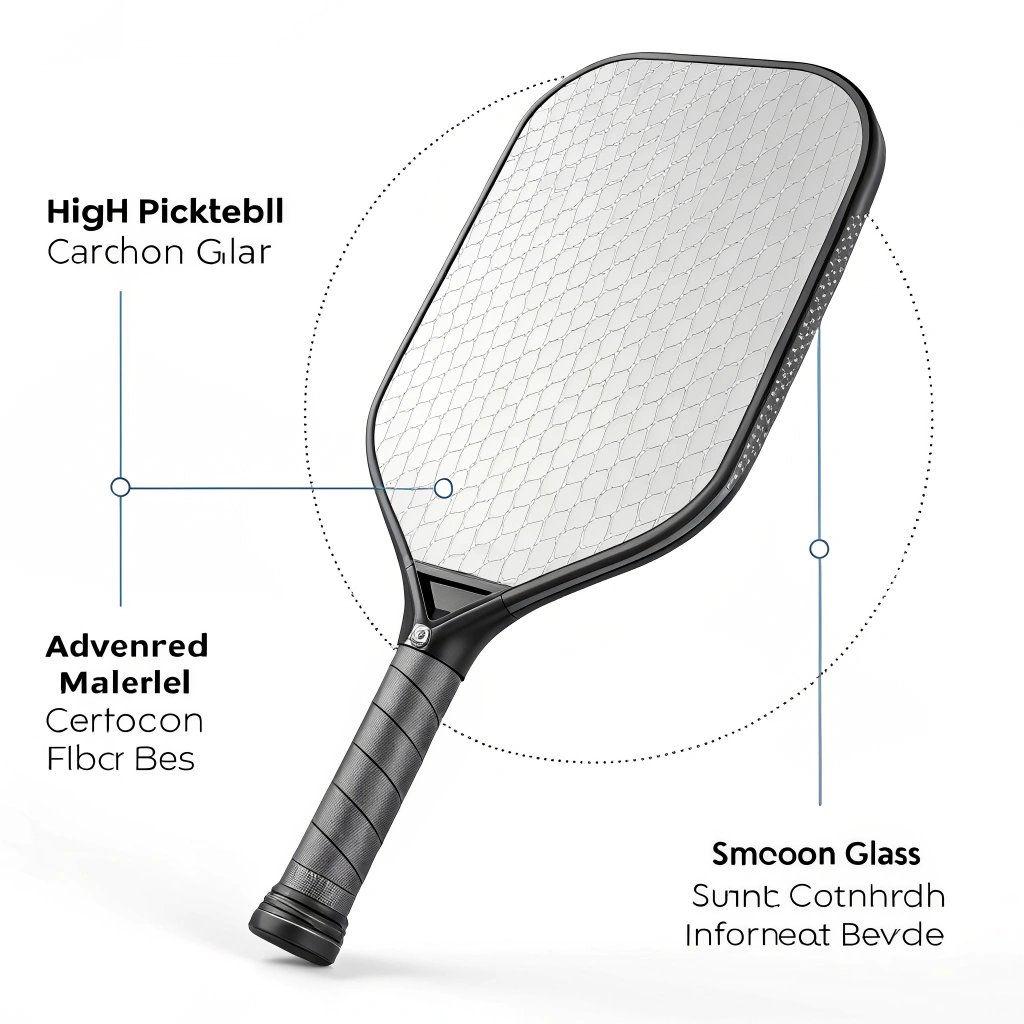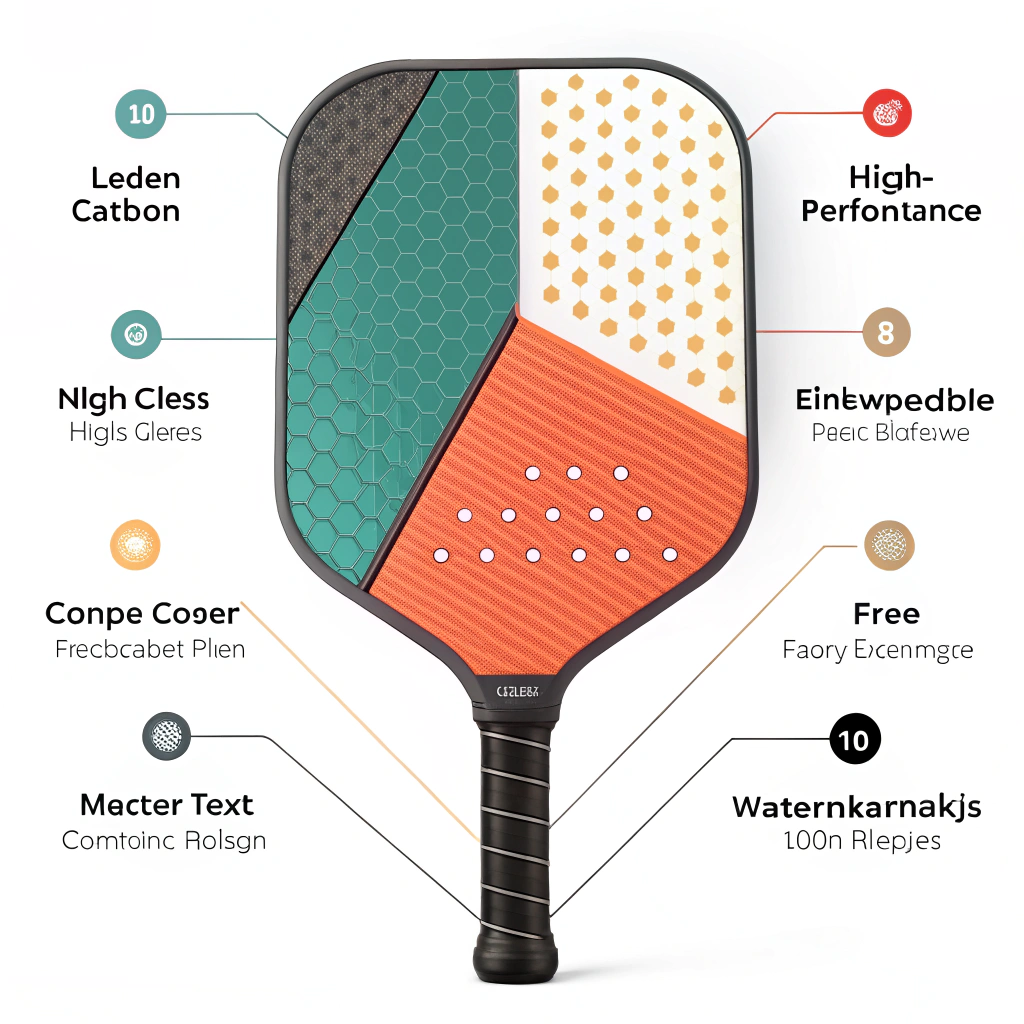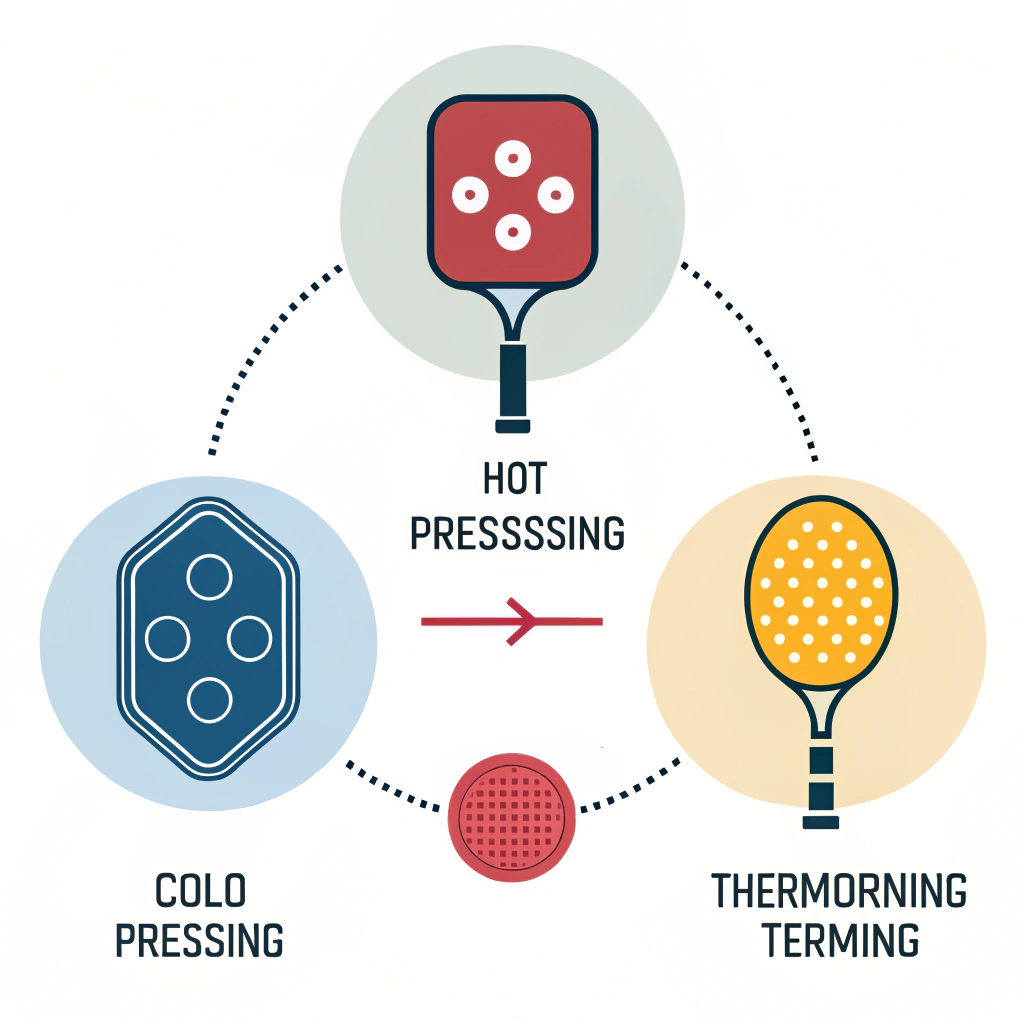Pickleball is a sport that offers low barriers to entry, affordable recreation, and significant market opportunities for businesses. Its ease of play combined with innovative sports equipment solutions, like high-performance paddles, makes it an attractive option for both recreational centers and sports retailers.
In today’s evolving leisure and sports equipment market, the surge in pickleball’s popularity is undeniable. As a low-cost, easy-to-learn sport, pickleball appeals to players across age ranges and skill levels, making it a potentially lucrative addition to any business portfolio. The sport’s accessibility—characterized by its simple rules and minimal equipment requirements—has led to explosive growth in participation, especially among communities seeking affordable, engaging leisure activities. Business decision-makers are finding that incorporating pickleball into their offerings can attract a broader customer base while tapping into a thriving market trend.
At the heart of this opportunity is advanced paddle technology1. Companies like NEX Pickleball are at the forefront of manufacturing paddles designed to deliver exceptional performance, durability, and comfort. With our focus on premium materials and cutting-edge production techniques, our paddles serve both competitive players and recreational enthusiasts alike. When evaluating business opportunities in the sports market, understanding the interplay between product design, manufacturing efficiency, and market trends is essential.
Business owners and sports equipment retailers face the challenge of identifying products that meet both performance standards and cost-efficiency criteria. For many, the question arises: How can an affordable sport like pickleball be paired with high-performance equipment? The answer lies in a combination of technological innovation and robust manufacturing processes. With pickleball’s growing popularity, the demand for quality paddles is rising—making it critical for businesses to source products that not only meet the gameplay requirements but also offer a competitive edge in durability and comfort.
NEX Pickleball leverages advanced manufacturing techniques to create paddles with precise weight distribution, ergonomic grip designs, and specialized surface textures. Our production processes—hot pressing, cold pressing, and thermoforming2—allow us to integrate various high-performance materials such as Carbon Fiber3, Fiberglass4 and innovative Composite Materials5. This approach ensures that our paddles maximize both power and control while keeping production cycles efficient and cost-effective.
Let’s take a closer look at the market fundamentals that make pickleball an attractive sport for beginners and seasoned players alike:
-
Easy-to-Play Nature:
Pickleball is renowned for its simplicity. With straightforward rules and minimal technical requirements, it is accessible to players of all ages, including seniors and beginners. This ease of play is a strong selling point for recreational centers looking to introduce sports that require little prior experience. -
Affordable Entertainment:
Compared to other sports that demand significant investments in equipment or facility space, pickleball offers a win-win scenario. The low-cost entry makes it an appealing option for communities and businesses alike, contributing to affordable recreational opportunities without sacrificing excitement or competitiveness. -
Expanding Consumer Base:
As more people discover the fun and health benefits of pickleball, the consumer base is simultaneously broadening. This expansion opens up new business avenues for sports retailers who can now cater to a diverse clientele—from young enthusiasts to older adults seeking low-impact exercise options.
High-performance pickleball paddles are engineered using advanced materials that enhance both performance and player comfort. In our manufacturing process, we select premium components that deliver on strength, flexibility, and durability. Below is an overview of the key materials used in production:
-
- 3K Carbon Fiber: Offers excellent durability and reduces vibrations, making it ideal for paddles that require high rebound force.
- 12K Carbon Fiber: With a higher thread density, this type provides a smoother surface and improved impact resistance, especially beneficial for competitive play.
- T300 Carbon Fiber: Known for its balanced performance in terms of strength and weight, perfect for players seeking both power and maneuverability.
-
Fiberglass4:
Fiberglass paddles provide a generous sweet spot and excellent ball control. Our E-Glass Fiberglass is known for its elasticity and tensile strength, which contributes to a great hitting feel. -
Composite Materials5:
Combining materials like carbon fiber and fiberglass, or incorporating a bamboo core composite, results in paddles that are not only lightweight but also durable. These materials offer a mix of power, control, and a unique hitting experience. -
Core Materials:
The paddle’s core significantly influences its performance:- Nomex Honeycomb Core: Delivers superior shock absorption and durability.
- Aluminum Honeycomb Core: Balances weight and precision, ideal for players seeking power with control.
- Polymer Honeycomb Core: Reduces vibrations, providing a softer feel that benefits recreational and beginner players.
Such an array of materials allows businesses to cater to various market segments, from competitive athletes looking for advanced paddle performance to casual players prioritizing comfort and ease of use.
Let’s now delve into the manufacturing processes that set NEX Pickleball apart in delivering top-notch products:
-
Hot Pressing:
This process involves heating the paddle materials and applying significant pressure to form a strong, resilient product.- Advantages:
• High production efficiency enables large-scale manufacturing.
• Produces paddles with excellent impact resistance and structural integrity. - Limitations:
• The high temperature might alter some material properties, potentially affecting tactile feel.
• Requires substantial capital investment in equipment.
- Advantages:
-
Cold Pressing:
Unlike hot pressing, the materials are shaped at room temperature under controlled mechanical pressure.- Advantages:
• Offers precise control over paddle thickness and structural nuances.
• The material retains its original properties better, enhancing ball control and responsiveness. - Limitations:
• Typically comes with longer production cycles.
• Demands high-quality pressure control equipment for consistency.
- Advantages:
-
Thermoforming2:
In this process, materials are heated to a softening point before being molded into complex shapes that enhance performance and aesthetics.- Advantages:
• Facilitates the creation of intricate designs and uniform material distribution.
• Improves the paddle’s stability and overall performance. - Limitations:
• Longer production time and higher equipment costs.
• Best suited for premium paddles or bespoke production runs.
- Advantages:
The table below summarizes these production processes:
| Production Process | Advantages | Limitations |
|---|---|---|
| Hot Pressing | High efficiency, strong paddles, excellent impact resistance | Potential alteration of material feel, high equipment costs |
| Cold Pressing | Precise control, retains material properties, excellent ball control | Longer production cycles, demands high-quality equipment |
| Thermoforming | Intricate design capabilities, uniform material distribution, stability | Extended production time, higher cost, ideal for premium products |
This robust manufacturing portfolio not only underpins our commitment to quality but also supports businesses in achieving a competitive advantage in the sports equipment market. Consistency in quality control remains paramount—each paddle is rigorously tested against international standards for strength, flexibility, and performance.
For B2B decision-makers, the broader implications of entering the pickleball market include tapping into an industry that meets consumer demand for active, social, and low-impact recreational activities. The combination of affordable entry-level sports with high-performance equipment offers a dual advantage: attracting a wide range of players while ensuring business partners receive state-of-the-art products that support sustainable growth.
Key takeaways for businesses considering an investment in pickleball equipment include:
-
Recognize Pickleball’s Appeal:
With its easy-to-learn nature, pickleball attracts players of all ages, promising steady market growth as communities increasingly value affordable, social sports. -
Evaluate Material and Process Innovation:
Advanced production methods and the use of premium materials like carbon fiber and fiberglass translate to paddles that outperform expectations. Their durability and performance characteristics can enhance customer satisfaction and brand reputation. -
Understand Production Efficiency:
The integration of hot pressing, cold pressing, and thermoforming processes allows manufacturers to balance scalability with quality. For business owners, this means reliable product availability that can adapt as market demand fluctuates. -
Leverage Customization Opportunities:
The option for custom paddle designs—through control of weight, balance, grip size, and surface treatment—enables businesses to cater to specific customer needs, enhance brand partnerships, and create unique market differentiators. -
Ensure Rigorous Quality Control:
High performance in sports equipment is non-negotiable. Partnering with manufacturers who emphasize precise material selection and stringent testing standards reassures your customers that they are investing in products built for longevity and optimal gameplay.
By focusing on these critical aspects, decision-makers are better positioned to navigate the nuances of a competitive sports equipment market. As the demand for pickleball grows, so too does the opportunity for businesses to forge partnerships with innovative manufacturers like NEX Pickleball—ensuring that your product lineup meets both current trends and future consumer expectations.
In conclusion, pickleball stands out as a low-impact, accessible sport with significant market potential for the B2B sector. Its easy-to-play nature, combined with cutting-edge paddle technology, makes it an ideal candidate for businesses looking to diversify their sports equipment offerings. Embracing advanced manufacturing processes and leveraging innovative materials allows manufacturers to produce paddles that meet high-performance standards, ensuring both consumer satisfaction and market competitiveness.
For decision-makers considering entering or expanding within the pickleball market, now is the perfect time to evaluate partnerships with experienced manufacturers. The growth in pickleball participation, combined with technological advancements in paddle fabrication, provides a promising landscape for profitable investments. Engage with industry-leading manufacturers to gain insights, customize products, and enjoy the benefits of a robust, quality-focused production system—driving both business success and sporting excellence.
People Also Ask
• Is pickleball easy to play for beginners?
Yes, pickleball is designed to be accessible for people of all ages and skill levels. Its rules are simple, and the game is structured to promote quick learning and social interaction, making it a great way to exercise and meet new people.
• Is pickleball hard for seniors?
Pickleball is generally low-impact and easy on the joints, which makes it a favorable option for seniors. However, using proper technique and warming up adequately are important to avoid any potential joint stress or injury.
• What are the disadvantages of pickleball?
While pickleball is popular and accessible, players may experience injuries such as minor strains, sprains, or even more serious incidents like head trauma. The sport's dynamic lateral movements can increase the risk of ankle and knee injuries if proper form isn’t maintained.
-
paddle technology: Click to learn how innovative paddle technology integrates advanced design and material science to enhance performance, durability, and user experience in sporting equipment. ↩ ↩
-
thermoforming: Click to read about the thermoforming process, a manufacturing method that shapes heated materials into complex, performance-enhancing designs for premium products. ↩ ↩ ↩2
-
Carbon Fiber: Click to explore the benefits, properties, and applications of Carbon Fiber in high-performance sporting goods, offering superior strength-to-weight ratios and vibration reduction. ↩ ↩ ↩2
-
Fiberglass: Click to understand how Fiberglass is used in the design of sports equipment to provide elasticity, tensile strength, and enhanced control during play. ↩ ↩ ↩2
-
Composite Materials: Click to discover how composite materials, combining various fibers and resins, provide a balance of lightness, durability, and improved performance in modern sporting equipment. ↩ ↩ ↩2







